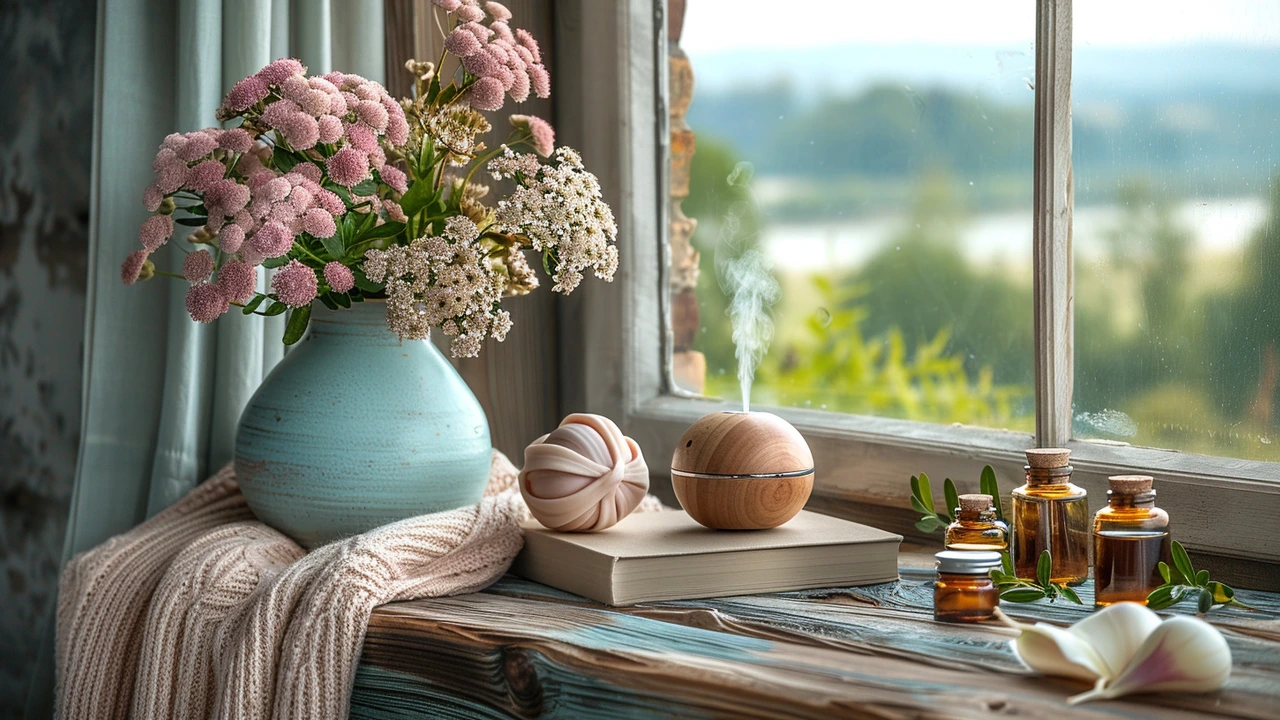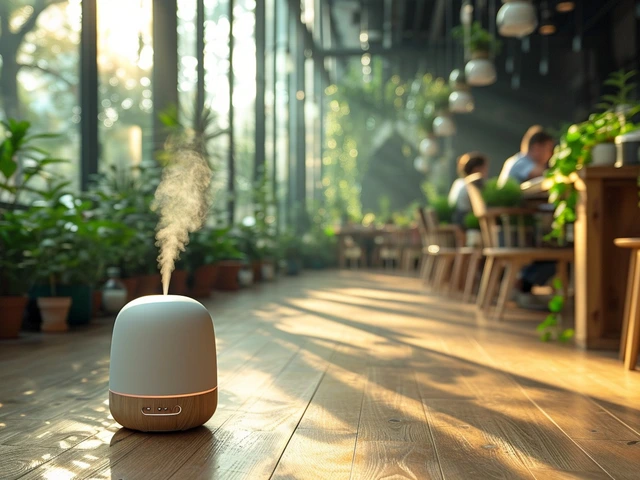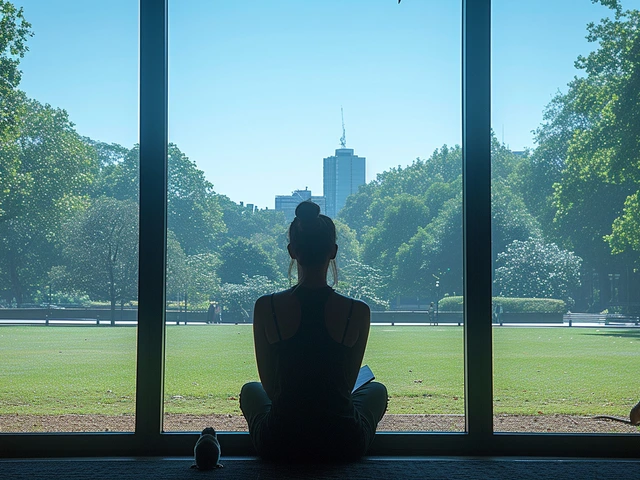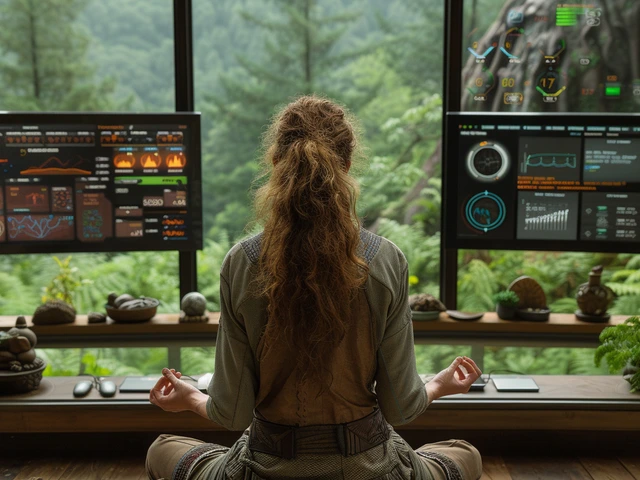
Introduction to Aromatherapy
Aromatherapy, a term that sparkles with the promise of relaxation and healing, is a practice with roots winding back thousands of years. It’s the artful use of essential oils extracted from plants to enhance our physical, mental, and emotional well-being. The concept might sound modern, but it's been a companion to many civilizations, including the ancient Egyptians, Greeks, and Romans, who recognized the powerful connection between scent and psyche. Understanding aromatherapy starts with acknowledging its dual role as both a science and an art. The science comes from the chemical compounds in essential oils that can influence our body's functioning, while the art is in the blending and experiencing of these sublime scents.
Embarking on a journey into aromatherapy, I've discovered it to be more than just a means to an end for relaxation or a fleeting escape from life's stresses. It’s a gateway to deeper connection with the natural world and ourselves. Each essential oil carries its own unique profile of benefits, from soothing lavender to invigorating peppermint. Their versatility makes them a staple in household wellness practices, bridging traditional remedies and modern science in a dance of molecules and senses.
Understanding Essential Oils
At the heart of aromatherapy lie essential oils, the concentrated essences of plants. These oils capture the plant's scent and flavor, or 'essence.' Extracted through distillation or mechanical methods, such as cold pressing, essential oils are the true soul of the plant, offering both aromatic and therapeutic properties. As I've delved deeper into aromatherapy, I've been amazed by the complexity of these oils. Each bottle of essential oil is a repository of years of sunlight and growth, distilled into a form that we can utilize for our well-being.
Diving into the world of essential oils, it's crucial to understand the importance of purity and quality. Synthetic or adulterated oils simply can't provide the same benefits as pure, high-quality essential oils. It’s akin to comparing a fresh, home-grown tomato to a canned counterpart; the essence and vitality just aren’t the same. When selecting oils, look for those that specify they are 100% pure essential oils, and consider the reputation of the brand as well as any certifications they may have.
The Benefits of Aromatherapy
The benefits of incorporating aromatherapy into our lives are vast and varied. From enhancing relaxation and sleep to boosting mood and cognitive function, the effects of essential oils can be profound. Aromatherapy operates on a holistic level, targeting not just symptoms but the root causes of imbalance. For example, the soothing scent of lavender oil is not just calming because it smells nice; its chemical components can actually lower cortisol levels, reducing stress.
Research into aromatherapy has been steadily growing, shedding light on its potential health benefits. One study highlighted the effectiveness of peppermint oil in relieving headaches, while another demonstrated how eucalyptus oil can assist in clearing nasal congestion. It’s clear that these oils are more than just a pleasant backdrop to our daily routines; they can play a key role in our health and well-being.
How to Use Essential Oils
Embarking on your aromatherapy adventure necessitates a foundational understanding of how to use essential oils safely and effectively. The beauty of aromatherapy lies in its flexibility; oils can be used in diffusers to scent our living environment, blended into carrier oils for massage, added to baths for a luxurious soak, or even inhaled directly for a quick mood boost. However, it's crucial to respect the potent nature of these oils. Essential oils should never be applied directly to the skin without being diluted in a carrier oil, and certain oils can be harmful if ingested.
Exploring different methods of application offers a delightful journey into the sensory world of aromatherapy. My personal favorite has always been using a diffuser, which disperses the oil into the air, transforming my home into a sanctuary of peace and well-being. Diffusing oils like lavender or chamomile in the evening sets the stage for a restorative night’s sleep, while a citrus blend in the morning energizes the senses, preparing me for the day ahead.
Selecting the Right Essential Oils
The world of essential oils is rich and diverse, with each oil offering unique benefits. Starting with a basic collection of versatile oils is a practical approach. Lavender, for example, is a must-have for its calming and relaxing properties. Peppermint is fantastic for its invigorating effect and ability to ease headaches. Lemon oil, with its bright, uplifting aroma, can enhance mood and purify the air. As you grow more comfortable and familiar with these oils, branching out to explore others like eucalyptus, tea tree, or rosemary can add depth to your aromatherapy practice.
When selecting oils, listen to your body and your instincts. Aromatherapy is intensely personal, and what works for one may not for another. Paying attention to how different scents make you feel is key. This intuitive approach has guided me in creating blends that not only address specific needs but also resonate on a personal level, enhancing the overall aromatherapy experience.
Creating a Personal Aromatherapy Practice
Integrating aromatherapy into your daily life doesn’t have to be complex or time-consuming. It can be as simple as adding a few drops of essential oil to your shower in the morning to invigorate your senses or using a lavender-scented lotion before bed to promote peaceful sleep. Building a personal aromatherapy practice is about finding what works for you and your lifestyle, making adjustments as your needs and preferences change over time.
One of the joys of aromatherapy is the act of creating custom blends. Combining oils not only allows you to tailor the therapeutic benefits to your needs but also offers an avenue for creativity. There’s something profoundly satisfying about crafting a blend that perfectly encapsulates a desired mood or benefit, whether it’s for focus, relaxation, or something as simple as a reminder of a beloved place or season.





Write a comment